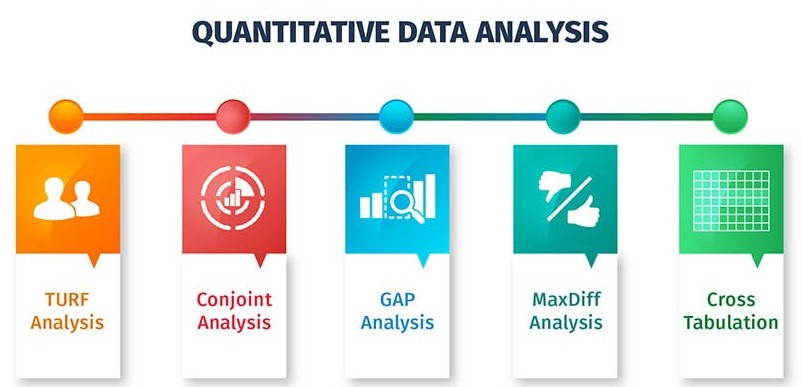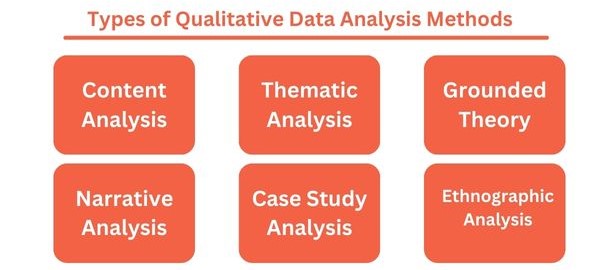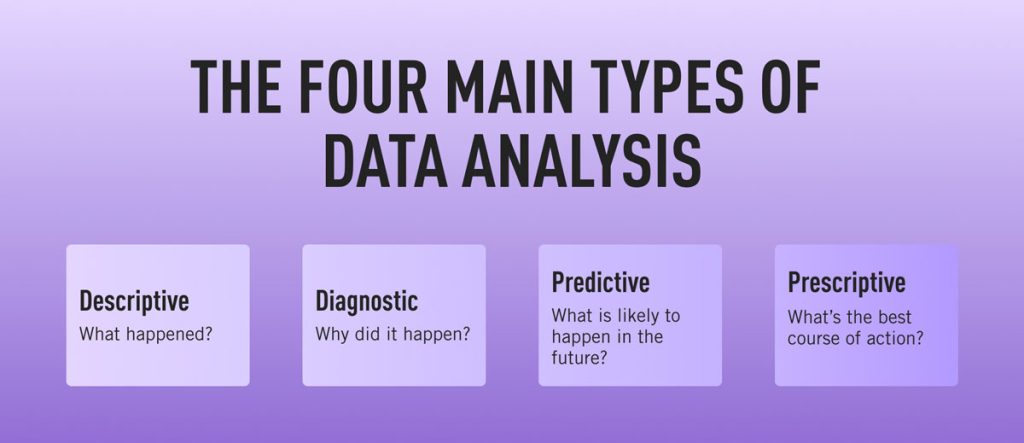
Table of Contents
The successful completion of a nursing thesis hinges on the robust analysis of collected data. This process is not merely a technical exercise but a critical step in uncovering meaningful insights, supporting your research question, and ultimately contributing to the advancement of nursing knowledge.
This comprehensive guide will equip you with the tools and understanding to effectively navigate the complex world of nursing thesis data analysis.
The Importance of Nursing Thesis Data Analysis
Effective nursing thesis data analysis is crucial for drawing meaningful conclusions and contributing to the advancement of nursing knowledge. A well-conducted nursing thesis data analysis allows researchers to identify patterns, trends, and relationships within their data, providing valuable insights into the research question. This process enables nurses to develop evidence-based practices, improve patient care, and ultimately, enhance the quality of healthcare delivery.
By employing appropriate statistical methods and interpreting the findings accurately, nursing thesis data analysis ensures that the research results are reliable and valid. A thorough analysis helps researchers avoid drawing erroneous conclusions, which could lead to misleading recommendations or misinformed decision-making. Therefore, nursing thesis data analysis is not merely a technical step but a critical component of the research process that underpins the scientific rigor and impact of a nursing thesis.
Steps to Effective Nursing Thesis Data Analysis
1. Defining Your Research Question and Objectives:
Before embarking on any data analysis, clarity regarding your research question and objectives is paramount. A well-defined research question serves as your compass, guiding you towards relevant data collection and analysis methods. For instance, if your research question explores the impact of a new intervention on patient satisfaction, your data analysis should focus on quantifying patient satisfaction levels and identifying any statistically significant differences between the intervention and control groups.
2. Choosing the Right Data Analysis Techniques:
The choice of data analysis techniques depends on the type of data collected and your research question. Here’s a breakdown of common methods:
- Quantitative Data: This type of data, expressed numerically, lends itself to statistical analysis methods:
- Descriptive Statistics: Summarize and describe the data using measures like mean, median, mode, standard deviation, and frequency distribution.
- Inferential Statistics: Draw conclusions about the population based on a sample. Common tests include t-tests, ANOVA, Chi-square tests, and regression analysis.
- Correlation Analysis: Examines the relationship between two or more variables.

- Qualitative Data: This data, often expressed through words or observations, requires different analytical techniques:
- Thematic Analysis: Identifying themes or patterns in the data through careful reading and coding.
- Content Analysis: Examining the frequency and significance of specific words, phrases, or concepts within the data.
- Grounded Theory: Developing a theoretical framework from the data itself, through iterative processes of coding and analysis.

3. Data Cleaning and Preparation:
Before any analysis can begin, your data must be clean and prepared. This crucial step involves:
- Identifying and correcting errors: Missing values, outliers, or inconsistent data entries can skew results. Employ data cleaning techniques to address these issues.
- Transforming data: Converting raw data into a format suitable for analysis. This may include converting categorical variables to numerical ones or creating new variables from existing ones.
- Data coding: Assigning numerical or alphabetical codes to qualitative data, facilitating easier analysis.
4. Utilizing Statistical Software:
Statistical software packages like SPSS, R, or Stata are essential tools for nursing thesis data analysis. These programs automate complex calculations, provide visualizations, and assist in generating reports. Familiarizing yourself with the chosen software is essential for efficient and accurate analysis.
5. Data Interpretation and Meaning Making:
Once the analysis is complete, the most crucial step is interpreting the results and drawing meaningful conclusions. This involves:
- Connecting the dots: Relate the findings back to your research question and objectives. What do the numbers or themes reveal about the phenomenon under study?
- Considering context: Analyze the results within the broader context of your research and relevant literature. Are the findings consistent with previous studies or do they offer new insights?
- Drawing inferences: Based on the data, form conclusions that answer your research question and contribute to the body of knowledge.
6. Addressing Ethical Considerations:
Ethical considerations are paramount throughout the research process, including nursing thesis data analysis. This means:
- Confidentiality and privacy: Protecting the identities and sensitive information of participants.
- Data integrity: Maintaining the accuracy and validity of the data.
- Informed consent: Ensuring participants understand the research and freely agree to participate.

7. Writing the Results Section:
The results section of your thesis presents the findings of your nursing thesis data analysis. This section should be clear, concise, and organized.
- Presentation of findings: Present the results in tables, figures, or narratives, using appropriate statistical language.
- Explanation of findings: Interpret the results within the context of your research question and objectives.
- Highlighting key findings: Emphasize the most significant or surprising findings that answer your research question.
8. Strategies for Effective Data Analysis in Nursing Theses:
- Collaborate with a statistician: If you lack expertise in statistical analysis, consider working with a statistician to ensure accurate and robust analysis.
- Use visualization tools: Visual representations of data, like charts and graphs, can help you understand patterns and trends more readily.
- Engage in peer review: Share your data analysis methods and results with colleagues or mentors to receive constructive feedback and identify potential issues.
9. Common Pitfalls to Avoid in Nursing Thesis Data Analysis:
- Overlooking data cleaning: Insufficient data cleaning can lead to inaccurate and unreliable results.
- Misinterpreting statistical results: Ensure you understand the implications of statistical tests and avoid drawing unwarranted conclusions.
- Ignoring qualitative data: Even in quantitative studies, qualitative data can provide valuable insights into the lived experiences of participants.
- Failing to address limitations: Acknowledge any limitations of your study and how they may impact the findings.
10. Examples of Effective Nursing Thesis Data Analysis:
- Impact of a mindfulness intervention on patient anxiety: A quantitative study might use a t-test to compare anxiety scores before and after the intervention.
- Patient perceptions of hospital discharge planning: A qualitative study might utilize thematic analysis to identify key themes related to patients’ experiences.
- Factors influencing medication adherence in older adults: A mixed methods study might combine quantitative data on medication adherence rates with qualitative interviews to explore the underlying reasons for non-adherence.
11. Significance of Data Analysis in Nursing Research:
Nursing thesis data analysis plays a pivotal role in advancing nursing knowledge and practice. By analyzing data, we can:
- Identify patterns and trends: Uncover hidden patterns in patient care and health outcomes.
- Test hypotheses: Evaluate the effectiveness of interventions and treatments.
- Develop evidence-based practice: Provide strong evidence to guide clinical decision-making.
- Improve patient care: Contribute to the development of innovative and effective nursing interventions.
12. Beyond the Thesis: Applying Data Analysis Skills in Nursing Practice:
The skills learned during nursing thesis data analysis are highly applicable to everyday nursing practice. These skills can be used to:
- Evaluate the effectiveness of nursing interventions: Track patient outcomes and identify areas for improvement.
- Analyze patient data: Use data to understand patient needs and develop individualized care plans.
- Participate in quality improvement initiatives: Utilize data to drive quality improvement efforts and ensure patient safety.
Effective nursing thesis data analysis is essential for producing a rigorous and impactful thesis. By understanding the various techniques, tools, and ethical considerations involved, you can transform your data into meaningful insights that advance nursing practice and contribute to the body of knowledge. Remember, nursing thesis data analysis is not an isolated activity but a crucial element of the research process, demanding meticulous attention to detail, a critical mindset, and a commitment to ethical research practices.
Frequently Asked Questions about Nursing Thesis Data Analysis
- What are the common methods for analyzing data in a nursing thesis? This question explores the diverse approaches to nursing thesis data analysis, including quantitative methods like statistical analysis and qualitative methods like thematic analysis. Understanding these options is crucial for selecting the most appropriate method for your research question.
- How do I choose the right statistical tests for my nursing thesis data analysis? This question focuses on selecting the appropriate statistical test based on your research design, data type, and specific research questions. Understanding the assumptions and limitations of each test is essential for conducting a rigorous nursing thesis data analysis.
- What are the ethical considerations for analyzing data in a nursing thesis? This question highlights the importance of maintaining confidentiality and ensuring data security during the nursing thesis data analysis process. Ethical guidelines ensure the privacy and well-being of participants.
- How do I interpret the results of my nursing thesis data analysis? This question delves into the process of translating statistical findings and thematic patterns into meaningful interpretations relevant to your research question. Drawing clear and accurate conclusions from nursing thesis data analysis is crucial for informing nursing practice.
- What software programs are available for conducting nursing thesis data analysis? This question explores the various software options available for assisting with nursing thesis data analysis, such as SPSS, NVivo, and R. Choosing the right software depends on your data type, statistical needs, and personal preference.
- How do I present the findings of my nursing thesis data analysis? This question focuses on effectively communicating your findings through tables, figures, and narratives. Clear and concise presentation of nursing thesis data analysis results enhances readability and understanding.
- How can I ensure the reliability and validity of my nursing thesis data analysis? This question emphasizes the importance of using rigorous methods and ensuring data accuracy to achieve reliable and valid conclusions from your nursing thesis data analysis.
- What are the limitations of my chosen method for nursing thesis data analysis? This question encourages critical reflection on the strengths and limitations of your chosen approach to nursing thesis data analysis. Recognizing these limitations helps to frame your conclusions and suggest future directions for research.
- How can I avoid common errors in nursing thesis data analysis? This question focuses on potential pitfalls and common mistakes to avoid during the nursing thesis data analysis process. Learning from previous errors can improve the accuracy and rigor of your research.
- Where can I find resources to help me with my nursing thesis data analysis? This question highlights the availability of resources, such as textbooks, online tutorials, and expert mentors, to support and guide you through the challenges of nursing thesis data analysis.

Understanding these frequently asked questions will help you navigate the complexities of nursing thesis data analysis and produce a high-quality, impactful research project. Remember, thorough and accurate analysis is crucial for drawing meaningful conclusions and contributing to the advancement of nursing knowledge and practice.
Common Mistakes to Avoid in Nursing Thesis Data Analysis
While nursing thesis data analysis is a critical step in producing a robust and impactful thesis, it is also prone to pitfalls that can compromise the validity of your findings and undermine the strength of your conclusions. To ensure your nursing thesis data analysis is accurate, meaningful, and contributes to the advancement of nursing knowledge, it’s crucial to be aware of and avoid these common mistakes:
1. Neglecting Data Cleaning and Preparation:
- Ignoring outliers: Outliers, extreme values that deviate significantly from the rest of the data, can distort statistical analyses. It’s essential to investigate and handle outliers appropriately, either by removing them, correcting them, or transforming the data.
- Missing data: Missing values can introduce bias into your analysis. You must address missing data by using imputation techniques (estimating missing values) or excluding cases with missing values, depending on the nature and extent of the missingness.
- Inconsistent data entry: Data inconsistencies, such as typographical errors or variations in coding, can lead to inaccurate results. Ensure data is entered consistently and verify the accuracy of entries throughout the data cleaning process.
2. Misinterpreting Statistical Results:
- Confusing correlation with causation: Just because two variables are correlated doesn’t mean one causes the other. Carefully consider alternative explanations and avoid drawing causal conclusions solely based on correlation.
- Over-reliance on p-values: P-values only indicate the likelihood of observing the results if there were no association between variables. They do not indicate the strength of the relationship or the practical significance of the findings.
- Ignoring effect sizes: Effect sizes measure the magnitude of the relationship between variables. They provide a more complete picture of the findings than p-values alone.
3. Ignoring Qualitative Data:
- Focusing solely on quantitative analysis: Qualitative data, although often underutilized in nursing thesis data analysis, offers valuable insights into the lived experiences and perspectives of participants.
- Failing to integrate qualitative and quantitative data: Combining qualitative and quantitative data through mixed methods research can provide a more comprehensive and nuanced understanding of the phenomenon under study.
4. Failing to Address Study Limitations:
- Overstating the generalizability of findings: Acknowledge the limitations of your study, such as sample size, sampling method, or specific context, to prevent overgeneralizing the results.
- Ignoring potential biases: Be transparent about potential biases, such as selection bias, information bias, or confounding variables, and discuss how they might have affected your findings.
5. Failing to Adequately Present Findings:
- Using overly technical language: Present your findings in a clear and concise manner, avoiding jargon that may be unfamiliar to readers outside of your field.
- Neglecting to explain findings in the context of your research question: Connect your findings back to your research question and objectives, demonstrating how the results contribute to answering the question.
- Overlooking the significance of your findings: Highlight the implications of your findings for nursing practice, research, or policy, emphasizing their contribution to the body of knowledge.
6. Overlooking Ethical Considerations:
- Breaches of confidentiality: Ensure participant data is protected and anonymized to maintain confidentiality and privacy.
- Lack of informed consent: Obtain informed consent from participants before data collection and analysis, ensuring they fully understand the research process.
- Data fabrication or manipulation: Maintain the integrity of your data by ensuring accuracy, authenticity, and avoiding any manipulation to achieve desired results.
7. Lack of Adequate Supervision and Guidance:
- Insufficient mentorship: Seek guidance and support from experienced researchers, mentors, or statistical consultants throughout the nursing thesis data analysis process.
- Overconfidence in self-analysis: Avoid relying solely on your own understanding of data analysis techniques. Seek external validation from peers, mentors, or statisticians to ensure the accuracy and rigor of your analysis.
By being aware of these common mistakes and taking steps to avoid them, you can ensure your nursing thesis data analysis is robust, insightful, and contributes to the advancement of nursing knowledge and practice. Remember, nursing thesis data analysis is not simply a technical exercise; it is a vital component of the research process, requiring meticulous attention to detail, critical thinking, and a commitment to ethical research practices.

Final Thoughts
The journey of nursing thesis data analysis can be challenging, but it is also deeply rewarding. By investing time and effort in understanding the process and applying the right techniques, you can unlock the potential of your data, contribute to the advancement of nursing practice, and make a real difference in the lives of patients.
Get Custom Nursing Thesis Data Analysis Help
Conducting proper nursing thesis data analysis can be an uphill task for most learners. But, you can easily avoid the stress with professional assistance from Nursing Papers. We offer custom nursing thesis writing help, tailored to your specific needs and career goals. Besides, our writers can also assist you with writing nursing research papers, essays and dissertations.







